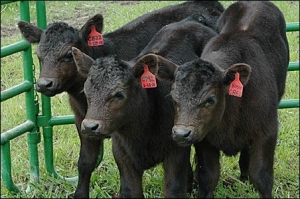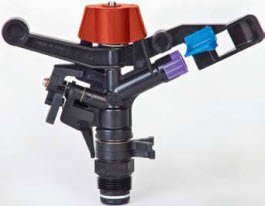The common disease of Dairy cows and treatments
Bovine virus diarrhoea (bovine pestivirus)

Overview
| Cause |
Bovine viral diarrhoea virus (BVDV) is a pestivirus in the Flaviviridae family. Related pestiviruses include classical swine fever virus of pigs and border disease virus (or hairy shaker disease virus) of sheep. It is not an insect-borne virus (arbovirus). |
|---|---|
| Description |
BVDV, also referred to as bovine pestivirus and mucosal disease virus, is a virus that is now recognised as an insidious cause of losses in beef and dairy herds in Australia. BVDV affects all types of cattle, and has probably been present in Australia as long as cattle. In the past it has commonly been misdiagnosed as other cattle diseases. In herds recently infected with BVDV, production losses of between 25 and 40% have been recorded due to reduced reproductive performance, death losses and ill thrift. If BVDV stays in the herd, annual production losses between 5 and 10% commonly occur. Other ruminant species (i.e. deer, goats) may be infected and rarely show clinical signs of disease. |
| Where the disease occurs |
Infection is widespread throughout Queensland and Australia, with many herds having evidence of infection - even extensively managed beef herds. Antibody prevalence rates in cattle in Australia are around 60% while over 80% of herds have been infected. |
| The disease in animals |
Bovine virus diarrhoea virus is capable of causing a large number of disease 'syndromes' in cattle herds. Acute bovine virus diarrhoea: Occurs when healthy normal cattle are infected with BVDV. It is rarely diagnosed in Australia, with most pestivirus infections going unnoticed. When seen, signs include a transient fever, a depressed 'hollow' appearance, diarrhoea and sometimes a cough. While never recorded in Australia, profuse bleeding from small wounds, such as ear tagging wounds may also occur. Cattle infected with BVDV may also be more susceptible to other infections due to a depressed immune response while their body copes with the virus infection. Infected cattle develop a strong immunity when they recover. Foetal infections with BVDV: Bovine virus diarrhoea virus is capable of crossing the cow's placenta and infecting the developing foetus. If cows lack immunity to BVDV and are infected while they are pregnant, the virus can damage the foetus. Cows that have immunity to pestivirus from previous exposure can block this passage and protect their foetus. This in utero infection of the foetus via the naive dam is the most important form of BVDV infection and results in most losses under Australian conditions. Foetal infections with BVDV result in a wide range of disease syndromes and production losses. The losses that occur depend on the stage of pregnancy when foetuses are infected with BVDV.
The most important outcome of foetal infection with BVDV is the birth of calves that are PI. These animals shed pestivirus for life, constantly infecting other cattle mixed with them, in particular, pregnant heifers and cows. Mucosal disease: PI cattle may also develop mucosal disease. This is due to the resident BVD virus mutating in the PI animal and becoming more virulent. Mucosal disease is the most dramatic syndrome associated with BVDV infection and the syndrome most often recognised by producers. Affected cattle drool excessively, appear depressed and feverish, have persistent often bloody diarrhoea, and sometimes a soft cough and lameness (symptoms that can easily be confused with foot and mouth disease, rinderpest, and malignant catarrhal fever). The severity of mucosal disease varies from an acute form with death within a few days to chronic wasting disease. With the acute form of mucosal disease, there is a profuse diarrhoea with ulcers in the nose, mouth, eyes and between the toes. At necropsy these ulcers are often found to extend right through the upper and lower intestinal tract. With the chronic wasting form of mucosal disease, calves just grow poorly. Often there are no visible abnormalities at necropsy, but microscopic changes can be found. Persistent infection with BVDV should always be considered where some young cattle in a mob are doing very poorly while most of the other cattle are doing very well. |
| How the disease spreads |
Bovine virus diarrhoea virus is spread by close contact (nose-to-nose) between cattle. PI animals shed large amounts of virus in all their secretions and excretions. The greatest period of spread is during yarding, particularly when cattle from different groups or herds are mixed together or penned in adjacent pens. PI bulls shed virus in their semen and may infect susceptible female cattle when serving them. |
| Diagnosis |
Blood tests can be performed to identify BVDV in live animals. This testing is aimed at detecting PI cattle. Tissues collected at post-mortem examination from dead cattle and aborted foetuses can also be tested for BVDV. Tests can also be done on skin biopsies (taken from the ear) or even hair samples. Blood samples can also be collected from a cross section of a herd to determine if cows or heifers have been exposed to BVDV by determining their antibody status. This can give an indication if BVDV infection is active in a herd or not and aid in designing an appropriate control program. In control programs milk and blood samples (often pooled to reduce costs) are used. PI animals are usually antibody negative as they are immunotolerant to the virus (consider it as self). |
| Control of the disease in animals |
Control of BVD in infected herds is aimed at ensuring replacement heifers develop a strong immunity before they are bred. This can be achieved by mixing a PI calf with replacement heifers prior to breeding. This needs to be undertaken with great care and advice should be sought from your private veterinarian. In herds that are free of BVDV, control is aimed at appropriate quarantine to keep introduced and neighbouring stock away from pregnant females i.e. by adopting strict biosecurity measures. Many countries have now introduced voluntary, industry or government-funded BVD eradication or control programs. There is no such program in Australia at the present time. Producers are encouraged to develop their own biosecurity measures to control the disease. |
| Vaccination |
A pestivirus vaccine is now registered for use in Australian cattle herds. It requires two doses of the vaccine 4 to 6 weeks apart for protection of the developing foetus i.e. both doses of the vaccine must be given prior to breeding for foetal protection to occur. Timing of booster vaccinations is not as critical as initial vaccination. Bulls should be vaccinated as well as cows as healthy normal bulls can be transiently infected and shed pestivirus in their semen for a short period after natural exposure. |
| Can people get the disease? |
No. Bovine virus diarrhoea virus is not zoonotic and does not infect people. |























